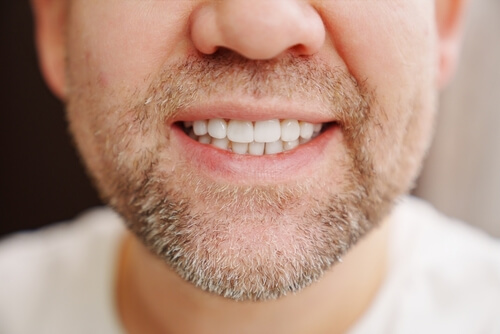Black tartar on the gum line can be an alarming sight, causing concern and discomfort for many. This persistent dental issue affects not only our oral health but also our overall well-being. Maintaining a bright and healthy smile requires knowing the origins, signs, and possible treatments for black tartar on delicate gums along the gum line.
We will delve into the nuances of this dental issue in this post, offering helpful advice and insights to help you take charge of your oral health.
What is Black Tartar, and How Does It Form on the Gum Line?
Black tartar on the gum line is a dental condition that raises aesthetic, dental professional, and health concerns. Understanding its formation and characteristics is key to addressing and preventing this oral health issue. Black tartar, a more advanced stage of plaque buildup, can significantly affect overall dental hygiene.
Definition and Characteristics:
Black tartar, or subgingival tartar, is a hardened deposit along the gum line. It is characterized by its dark color, ranging from brown to black. This discoloration is typically due to the presence of certain minerals and blood pigments that get incorporated into the tartar.
Formation Process:
The formation of black tartar begins with plaque buildup. Tartar can form on teeth if plaque—a sticky layer of germs and food particles—builds up and is not sufficiently cleaned. Compared to tartar above the gum line, subgingival tartar forms underneath it and is more difficult to remove.
Role of Oral Hygiene:
Poor oral hygiene practices, such as infrequent or improper brushing and flossing, contribute significantly to tartar buildup. Regular brushing and flossing can prevent plaque from hardening into tartar.
Dietary Factors:
Consumption of sugary foods, starchy snacks, and drinks like red wine can fuel the growth of plaque-forming bacteria. Additionally, lifestyle habits like smoking can contribute to the black appearance of tartar.
Health Implications:
Black tartar on the gum line can lead to gum disease, including symptoms like bleeding gums, bad breath, and tooth sensitivity. If left untreated, it can progress to more severe gum disease, potentially leading to tooth decay and even loose teeth.
The Health Implications of Black Tartar on Oral Hygiene
Beyond only being a cosmetic issue, black tartar on the gum line has serious health consequences for dental care. This hardened plaque can lead to various dental issues, emphasizing the importance of preventing black tartar and understanding its impact on oral health.
The Health Implications of Black Tartar on Oral Hygiene:
- Risk of Gum Disease: Black tartar accumulation at the gum line creates an ideal environment for bacteria, increasing the risk of gum disease. This can manifest as gingivitis, characterized by red, swollen, and bleeding gums, potentially advancing to periodontitis, a more severe form of gum disease.
- Contribution to Tooth Decay: The presence of tartar can contribute to tooth decay. Tartar provides a rough surface that facilitates further plaque accumulation, producing acids by bacteria, which attack the tooth enamel.
- Bad Breath and Oral Discomfort: Black tartar can cause bad breath (halitosis) and oral discomfort. The trapped bacteria are often responsible for unpleasant odors, while the rough texture of tartar can irritate the gums and surrounding tissue.
- Impact on Overall Oral Health: Long-term buildup of black tartar can significantly impact overall oral health. It can lead to receding gums, exposing the roots of the teeth, which are more susceptible to decay and sensitivity.
- Potential for Tooth Loss: In severe cases, the progression of gum disease and tooth decay due to black tartar can lead to tooth loss. This is frequently brought on by the breakdown of the tissues and supporting bone surrounding the teeth.
Identifying the Causes of Black Tartar Buildup

Identifying the causes of black tartar buildup is essential for effective prevention and treatment. Black tartar, a hardened dental plaque, poses significant risks to oral health. Understanding the factors contributing to black tartar signs and their formation can help in adopting strategies to minimize their occurrence.
Identifying the Causes of Black Tartar Buildup:
- Poor Oral Hygiene: Poor dental hygiene is the main factor contributing to the accumulation of black tartar. Regular brushing and flossing prevent plaque, a sticky film of food particles and germs, from building up and solidifying into tartar.
- Smoking and Tobacco Use: Cigarettes and other tobacco products can exacerbate the development of black tartar. Nicotine and other chemicals in tobacco stain the teeth and encourage plaque accumulation, which eventually hardens.
- Dietary Choices: Consuming foods and beverages high in sugars and starches promotes plaque formation. Frequent consumption of such items without proper oral hygiene can accelerate tartar buildup.
- Certain Beverages: Beverages like coffee, tea, and red wine contain pigments that can stain teeth and contribute to the dark color of tartar. These stains are often more difficult to remove once they bond with tartar.
- Genetic and Health Factors: Some individuals may be more prone to tartar buildup due to genetic predispositions or underlying health conditions, such as diabetes, which can affect saliva composition and oral bacteria.
Professional Treatment Options for Removing Black Tartar
Professional treatment is essential for effectively removing black tartar, a hardened form of plaque accumulating on the gum line. Since regular brushing and flossing at home are often insufficient to remove it, dental professionals employ specialized techniques to safely and effectively eliminate this buildup, thereby improving oral health.
Professional Treatment Options for Removing Black Tartar:
- Scaling and Root Planing: This common dental procedure involves the removal of tartar from above and below the gum line. Scaling scrapes away the tartar, while root planing smooths the tooth roots to help the gums reattach to the teeth. This treatment is crucial for treating gum disease caused by tartar buildup.
- Ultrasonic Cleaning: Some dental professionals use ultrasonic instruments for tartar removal. These devices emit vibrations to break up large tartar deposits, which are then rinsed away. Ultrasonic cleaning is often more comfortable and less invasive than traditional scaling.
- Laser Dentistry: In more advanced cases, dentists may use laser technology to remove black tartar. Laser treatments can be more precise and less painful, targeting the tartar without damaging surrounding gum tissue.
- Polishing: After tartar removal, teeth are often polished to remove surface stains and smooth the enamel. This helps prevent further plaque accumulation and improves the aesthetic appearance of the teeth.
- Fluoride Treatment: A fluoride treatment may be applied post-cleaning to strengthen the teeth and protect against tooth decay. Fluoride helps rebuild the mineral structure of the teeth, making them more resistant to future tartar buildup.
Preventative Measures to Keep Black Tartar at Bay

Preventing the buildup of black tartar is key to maintaining good oral health and hygiene. Black tartar, a hardened plaque that is challenging to remove, can lead to serious dental issues if left unchecked. By implementing efficient prevention measures, the likelihood of it developing is diminished.
Preventative Measures to Keep Black Tartar at Bay:
- Regular and Effective Oral Hygiene: Consistent and correct brushing twice daily with fluoride toothpaste and daily flossing is crucial in eradicating plaque before it hardens into tartar. Using a soft-bristled toothbrush and proper brushing techniques ensures thorough cleaning without harming the gums.
- Regular Dental Check-Ups and Cleanings: Professional dental cleanings every six months are crucial. Dental hygienists can remove accumulated tartar and guide on improving oral hygiene practices.
- Dietary Modifications: Limiting the intake of sugary and starchy foods, which contribute to plaque formation, can help prevent tartar buildup. Additionally, reducing the consumption of staining agents like coffee, tea, and red wine can minimize the risk of black tartar.
- Quitting Smoking: Tobacco products contribute significantly to the formation of black tartar. Quitting smoking can drastically reduce the likelihood of tartar development and improve overall oral health.
- Using Antiseptic Mouthwash: Incorporating an antiseptic mouthwash into the daily oral care routine can help kill bacteria contributing to plaque formation. This provides an additional line of defense against tartar accumulation.
In conclusion, black tartar on the gum line is a common issue many individuals face. This type of tartar buildup can lead to oral health problems if not addressed promptly. Maintaining proper oral hygiene habits, such as frequent brushing, flossing, and professional dental cleanings, is pivotal to stopping the development of black tartar and severe gum disease. Moreover, educating oneself about the causes, symptoms, and prevention methods associated with black tartar can greatly contribute to a healthier gum line and oral well-being. So, it is essential to stay attentive to potential black tartar buildup and seek dental assistance when necessary to maintain a healthy and beautiful smile.
References
Black Tartar on Teeth: Causes and Symptoms – Crest
https://crest.com/en-us/oral-care-tips/tartar-and-plaque/black-tartar-on-teeth-causes-symptoms
Black Tartar: Causes, Symptoms & Treatment Options
https://www.byte.com/community/resources/article/black-tartar/
Black Tartar on Teeth: Causes and How to Get It Removed
https://www.healthline.com/health/dental-and-oral-health/black-tartar-on-teeth
Tartar on Teeth (Dental Calculus): Causes & Removal
https://my.clevelandclinic.org/health/diseases/25102-tartar
Periodontitis – Symptoms and causes – Mayo Clinic
https://www.mayoclinic.org/diseases-conditions/periodontitis/symptoms-causes/syc-20354473

